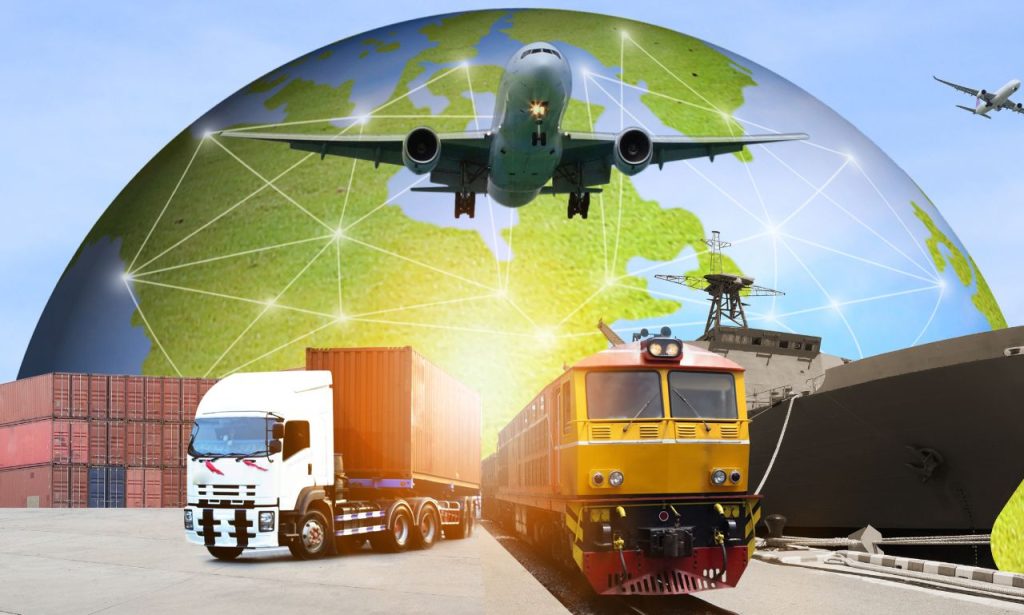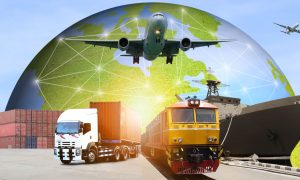Logistics is a complex puzzle for growing businesses. In this article, we’ll cover critical choices that shape your supply chain success. You’ll learn how minor adjustments in sourcing, storage, or shipping can impact profits, customer satisfaction, and scalability. We’ll delve into real-world examples, technology trends, and actionable steps to help you master logistics decisions, capitalize on opportunities, and avoid costly mistakes.
Understanding Logistics and Supply Chain Management
Logistics and supply chain management often get lumped together. Each term carries unique responsibilities and goals. Logistics focuses on moving goods efficiently from point A to point B. Supply chain management oversees the entire flow of materials, information, and money across all partners.
Maintaining a clear understanding of both functions can prevent overlaps and blind spots. Companies that misalign logistics with broader supply chain goals risk delays, wasted inventory, or inflated costs. Take Zara, for example. Their agile logistics network allows them to restock stores within days of design changes, keeping fashion fresh and sales soaring.
The Importance of a Holistic Logistics Strategy

Adopting a piecemeal approach to logistics leads to fragmented solutions and hidden costs. A holistic strategy considers supplier reliability, transportation options, warehousing, and customer needs simultaneously. Amazon’s success, in part, stems from its unified view of logistics and last-mile delivery. By owning warehouses, trucks, and even planes, they control costs and performance throughout the entire supply chain.
Embracing a comprehensive strategy enables you to anticipate bottlenecks and align resources effectively. It reduces reactive firefighting and fosters proactive planning. With proper coordination, minor tweaks in one area won’t trigger larger disruptions elsewhere.
Differentiating Logistics and Supply Chain
Logistics manages the physical flow of goods. Supply chain management encompasses procurement, manufacturing, and logistics under a single umbrella. Mixing these functions without clarity can create redundancy. For instance, procurement might order raw materials in large batches to secure discounts, while logistics prefers smaller shipments to cut holding costs. An innovative supply chain strategy strikes a balance between these needs, ensuring both cost efficiency and operational agility.
Components of a Responsive Logistics Strategy
A responsive logistics strategy adapts to changing market conditions, demand fluctuations, and unexpected disruptions. Key components include:
- Visibility: Real-time tracking across transportation modes.
- Flexibility: Ability to switch carriers or routes quickly.
- Collaboration: Strong partnerships with suppliers and carriers.
- Analytics: Data-driven insights to forecast demand and optimize routes.
Putting these components together creates a robust logistics network that can withstand pressure without breaking—just like a well-designed bridge under heavy traffic.
Key Areas of Logistics Management
Inbound Logistics
Inbound logistics covers sourcing raw materials or components from suppliers to your production site or warehouse. Selecting the right suppliers and optimizing shipment schedules can reduce lead times and lower inventory expenses. For example, Dell’s build-to-order model relies on synchronized inbound deliveries to assemble computers within days. Consistent communication with suppliers helps prevent stockouts and ensures production runs smoothly.
Outbound Logistics
Outbound logistics handles the movement of products from your facility to customers or retailers. Prioritizing shipment accuracy and speed drives customer satisfaction. Minor missteps—like choosing a slower courier to save a few dollars—can backfire when delivery deadlines are missed. Consider Zappos, which built its brand on offering free overnight shipping and hassle-free returns. That logistics commitment turned first-time buyers into loyal fans.
Reverse Logistics
Reverse logistics deals with returns, repairs, and recycling. Efficient reverse workflows safeguard profits and maintain a strong brand reputation. For example, Patagonia’s return program emphasizes sustainability by refurbishing or recycling jackets. That small decision to invest in reverse logistics reinforces its eco-friendly image and encourages customers to return.
Warehouse Management
Managing a warehouse involves more than simply stacking boxes on shelves. It consists of slotting inventory for efficient picking, maintaining safety protocols, and utilizing technology such as Warehouse Management Systems (WMS). Data from shelf sensors can pinpoint slow-moving items or identify space constraints. Minor layout changes can reduce picking times by 20%, resulting in lower labor costs and shorter order cycle times.
Transportation Management
Transportation management optimizes routes, loads, and carriers. Companies that use TMS (Transportation Management Systems) gain visibility into costs, transit times, and service levels. UPS saves millions of dollars annually by continually refining its delivery routes with advanced algorithms. Small decisions—such as selecting regional carriers or utilizing intermodal options—can yield significant savings and improved reliability.
The Role of Technology in Logistics
Innovations Driving Logistics Efficiency
Technology transforms logistics from manual processes into automated, data-driven operations. RFID tags enable real-time inventory tracking, while blockchain provides secure provenance records. DHL reported a 30% reduction in inventory errors after deploying IoT sensors across its warehouses. Small investments in emerging technologies often deliver outsized returns.
The Impact of Automation and Data Analytics
Automation speeds up repetitive tasks, such as sorting packages or generating shipping labels. Data analytics uncovers patterns in delivery delays or carrier performance. FedEx uses predictive analytics to reroute shipments around severe weather events, minimizing disruptions. Failing to harness these capabilities leaves you vulnerable to costly surprises.
Planning and Adapting Logistics Strategies
Long-term Goal Setting
Defining clear logistics objectives aligns teams and resources. Goals include reducing transportation costs by 10% or improving on-time delivery rates to 98%. Companies that set measurable targets can track progress and celebrate wins. Setting aggressive yet realistic goals gives your team motivation and focus.
Responding to Unplanned Challenges
Disruptions—from port strikes to natural disasters—test your logistics resilience. In early 2021, container shortages led to a 300% increase in shipping costs. Businesses with flexible carrier contracts or alternative routes weathered the storm. Asking “What if?” and running scenario simulations prepare you for unexpected events and ensure quick, confident decisions.
The Value of Third-Party Logistics Providers
Benefits and Services Offered
Third-party logistics (3PL) providers offer warehousing, transportation, and fulfillment services without the overhead of owning assets. They bring industry expertise, technology platforms, and negotiated carrier rates. Small online retailers can tap into same-day or two-day shipping networks through 3PL partnerships, leveling the playing field against larger competitors.
When to Partner with Third-Party Providers
Partnering with 3PLs makes sense when you lack the scale or expertise to manage complex logistics. If seasonal demand spikes strain your capacity, 3PLs can provide on-demand warehouse space and temporary staffing. Just be careful: over-reliance on a single provider can backfire if they face capacity constraints. Diversify providers to maintain flexibility.
Maintaining Fleet Efficiency and Safety
Implementing Safety Protocols
Safe fleets incur lower costs in terms of accidents, insurance premiums, and downtime. Regular vehicle inspections, driver training, and digital logs foster a culture of safety. DHL reduced accident rates by 15% after launching a defensive driving program and in-cab coaching tools. Safety investments pay off both in human and financial terms.
Strategies for Maximizing Fleet Utilization
Idle trucks burn cash without generating revenue. Dynamic route planning, backhaul optimization, and load-sharing techniques boost utilization. Minor adjustments—like consolidating shipments on low-volume lanes—can increase fleet efficiency by 12%. Use telematics data to identify underutilized assets and adjust capacity accordingly.
The Financial Implications of Logistics Decisions
Cost Management in Logistics
Every logistics decision carries cost implications. Opting for slower shipping may save a few cents per kilogram, but it risks customer dissatisfaction and potential churn. Overbuying warehousing space locks cash into unused assets. Careful cost-benefit analysis uncovers hidden expenses and highlights opportunities for savings.
Impact on Distribution and Delivery Costs
Distribution costs can represent up to 60% of total logistics expenses. Fuel surcharges, tolls, and detention fees add up quickly. Companies that invest in route optimization reduce the number of miles driven and cut fuel costs by 8–10%. Tracking delivery costs at an SKU level reveals loss-making products that may need price adjustments or alternative shipping strategies.
Enhancing Customer Satisfaction Through Logistics

Importance of Timely Deliveries
Fast, reliable deliveries shape customer perceptions and loyalty. A single late shipment can trigger complaints, negative reviews, or lost sales. Retailers offering same-day or next-day delivery options are capturing a growing share of e-commerce purchases. Promising realistic delivery windows and meeting them consistently builds trust.
Strategies to Reduce Delivery Errors
Mistakes in picking, packing, or labeling damage customer relationships. Barcode scanners and double-check processes catch errors before they leave the warehouse. Online grocers that achieve 99.5% picking accuracy experience fewer refunds and better ratings. Training staff, conducting regular audits, and rewarding quality performance reinforce error-free operations.
Conclusion
Small logistics decisions ripple through your growing business, affecting costs, customer loyalty, and operational resilience. Embrace a holistic strategy that integrates technology, data analytics, and flexible partnerships to drive innovation and growth. Set clear goals, anticipate disruptions, and continuously refine processes. By paying attention to inbound and outbound flows, warehouse layouts, transportation options, and reverse logistics, you can build a supply chain that supports ambitious growth without compromising your budget or reputation.
ALSO READ: How Will Consumer Confidence Impact Spending
FAQs
Logistics handles the physical movement and storage of goods. Supply chain management encompasses the integration of procurement, production, logistics, and information flows under a single umbrella.
If you lack the scale, expertise, or flexibility to manage warehousing and transportation, a 3PL offers on-demand capacity and industry-specific knowledge.
Technologies such as TMS, WMS, IoT sensors, and data analytics enable real-time visibility, route optimization, and predictive maintenance, thereby boosting accuracy and reducing costs.
Ignoring returns processes, failing to refurbish or recycle assets, and lacking visibility into returned goods can inflate costs and harm customer trust.
Accurate picking, reliable shipping, and timely deliveries strengthen brand reputation and encourage repeat business. Even minor delays or errors can lead to lost customers.




